27 January, 2024
SHEER KHURMA RECIPE
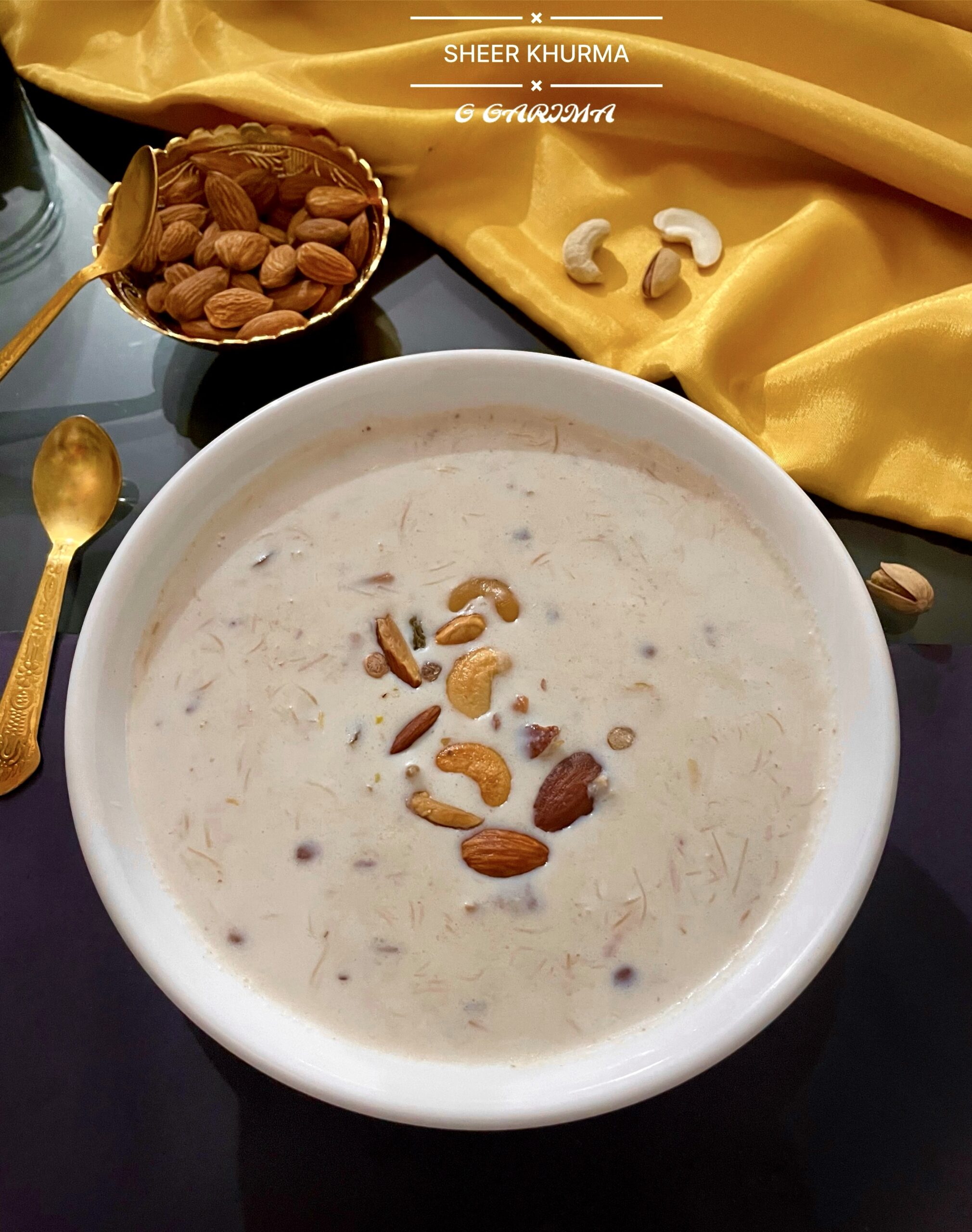
The name “Sheer Khurma” holds cultural and linguistic significance, reflecting the essence of this traditional dessert. In Persian, “Sheer” translates to “Milk,” while “Khurma” refers to “Dates.” Therefore, the literal translation of “Sheer Khurma” is “Milk with Dates.”
The name aptly describes the key components of the dish, highlighting the primary ingredients used in its preparation. Milk forms the rich and creamy base, while Dates contribute natural sweetness and a unique flavor profile.
Brief Description of Preparation
Preparing Sheer Khurma is an art that involves patience and precision. Begin by simmering Milk until it thickens, then add Vermicelli and let it soak up the richness. The magic unfolds as Dates, and Nuts join, creating a beautiful blend of textures and flavors.
From the creaminess and richness of Milk to the natural sweetness of Dates and the crunch of assorted Nuts, each component plays a crucial role. Saffron and Cardamom add a fragrant touch, elevating the dish to a sublime experience.

Variations
Just as cultures differ, so do their renditions of Sheer Khurma. In different regions, you might find unique twists to the classic recipe. Some add Rose Water for a floral note, while others incorporate sautéed Fruits for a burst of freshness. The variations are as diverse as the cultures that embrace this dessert.
The Introduction of Vermicelli in India
While Sheer Khurma originated as a Milk (Sheer) and Dates (Khurma) delicacy, its journey to India witnessed a delightful transformation. One of the notable modifications in the Indian rendition is the introduction of roasted Vermicelli which was not part of the original recipe.
Vermicelli brings a unique texture to the dish, adding a pleasant chewiness that complements the creamy base. The thin strands elegantly absorb the flavors of the Milk and Dates and enhance the overall experience of this dessert.

Let’s get started with the recipe.
INGREDIENTS:
| 1 Litre Whole Milk (Full Fat Milk) |
| 7 – 8 Dates (Deseeded and Sliced) |
| 40 – 50 Grams Whole Wheat Vermicelli (Seviya), Crushed |
| 4 tsp Ghee (Clarified Butter) |
| 1 tsp Chironji |
| 10 – 12 Pistachios |
| 10 – 12 Almonds |
| 10 – 12 Cashews |
| ¼ cup Raisins |
| ½ tsp Green Cardamom Powder |
| Sugar (According to Taste) |
STEP-BY-STEP RECIPE GUIDE
1. Boiling Whole Milk
- Heat full fat Milk in a thick-bottomed pot.
- Bring the Milk to a boil.
- Once it boils, reduce the heat and let it simmer.
- Stir occasionally to prevent it from sticking.
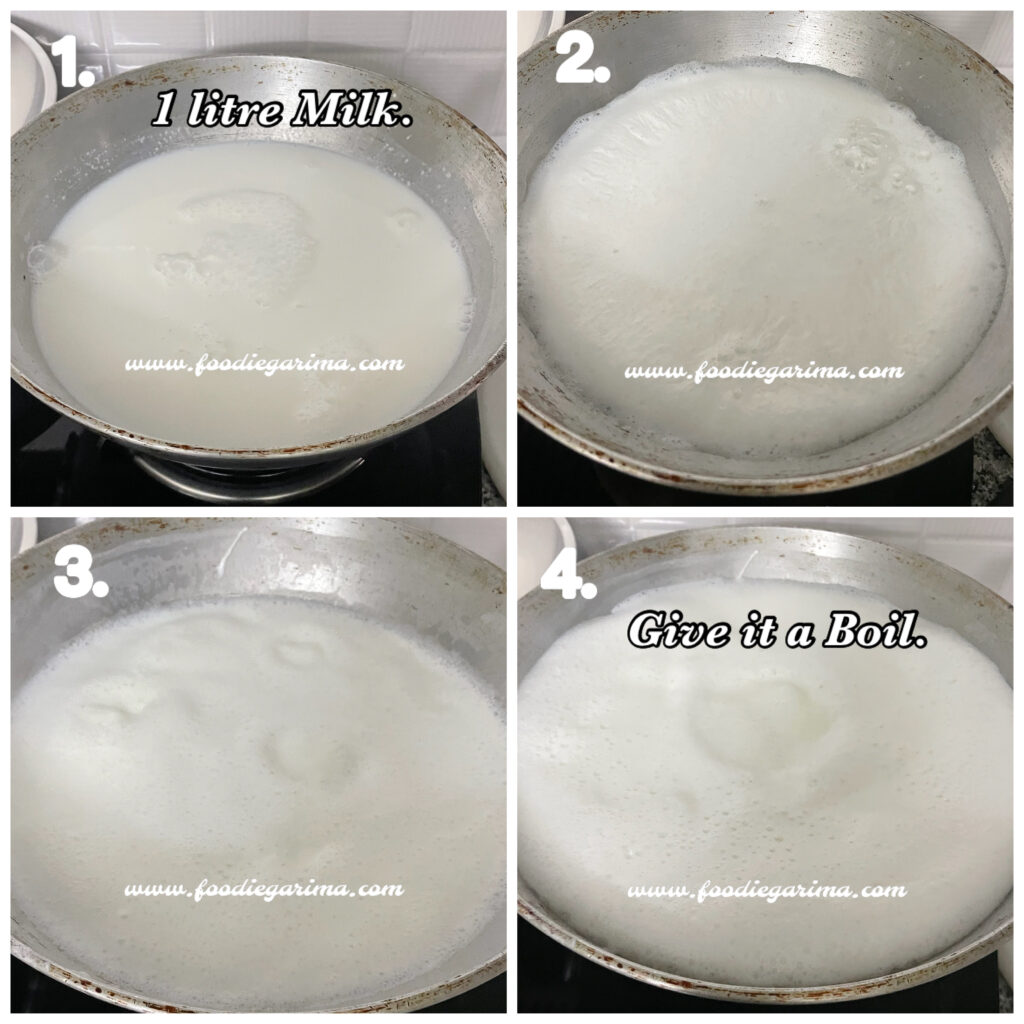
2. Add Dates
- Add sliced Dates to the simmering Milk.
- Mix well, allowing the flavors to blend.
- Continue simmering until the Milk reduces to approximately half of its original volume or starts thickening. It will take about 20 to 30 minutes.
- While the Milk is reducing, we’ll prepare the other ingredients.
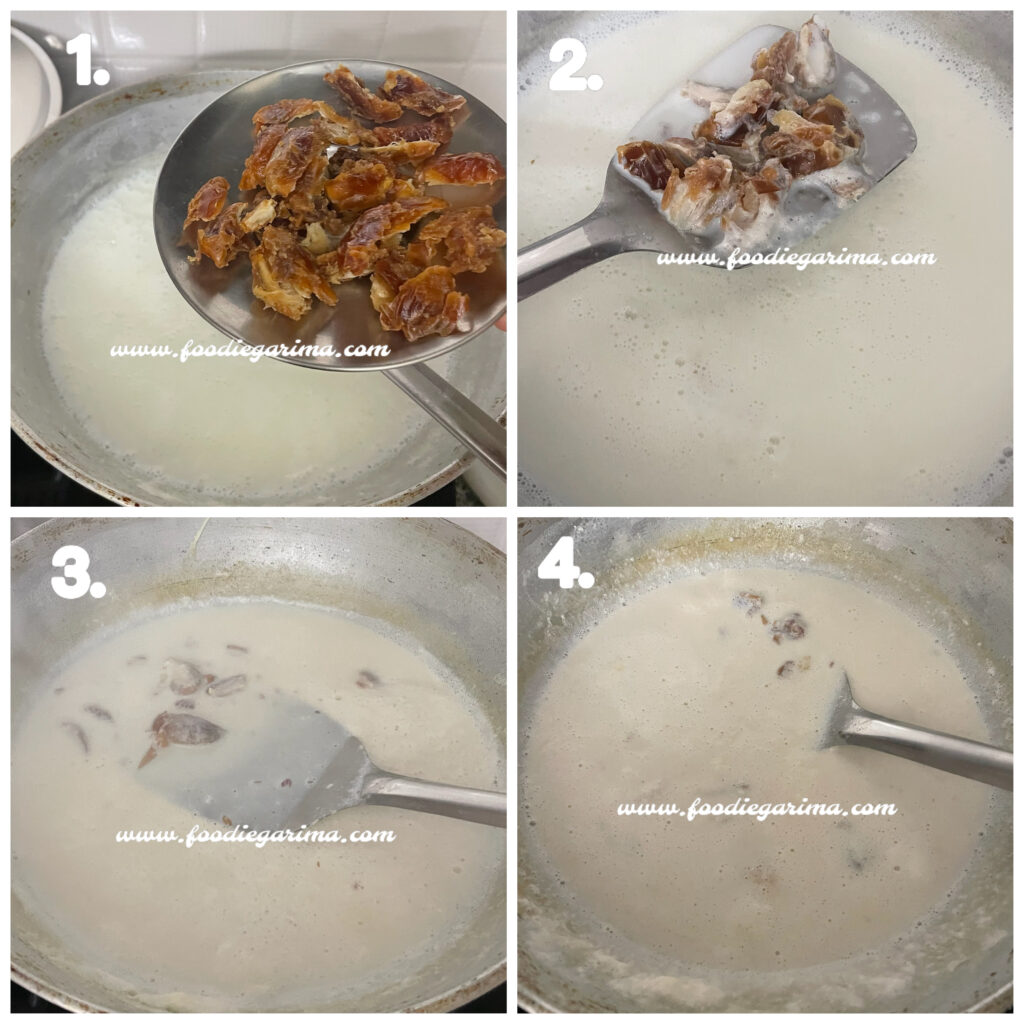
3. Preparing Nuts
- Chop or slice the Nuts; Cashews, Almonds, and Pistachios finely.
- Heat 2 tablespoons of Ghee (Clarified Butter) in a pan.
- Roast sliced Almonds, and Cashews in Ghee on low heat until they become lightly golden and fragrant. Stir continuously.
- Once roasting is done, add these roasted Nuts to the simmering Milk.
- Add Chironji and sliced Pistachios also. No need to roast Chironji and Pistachios.
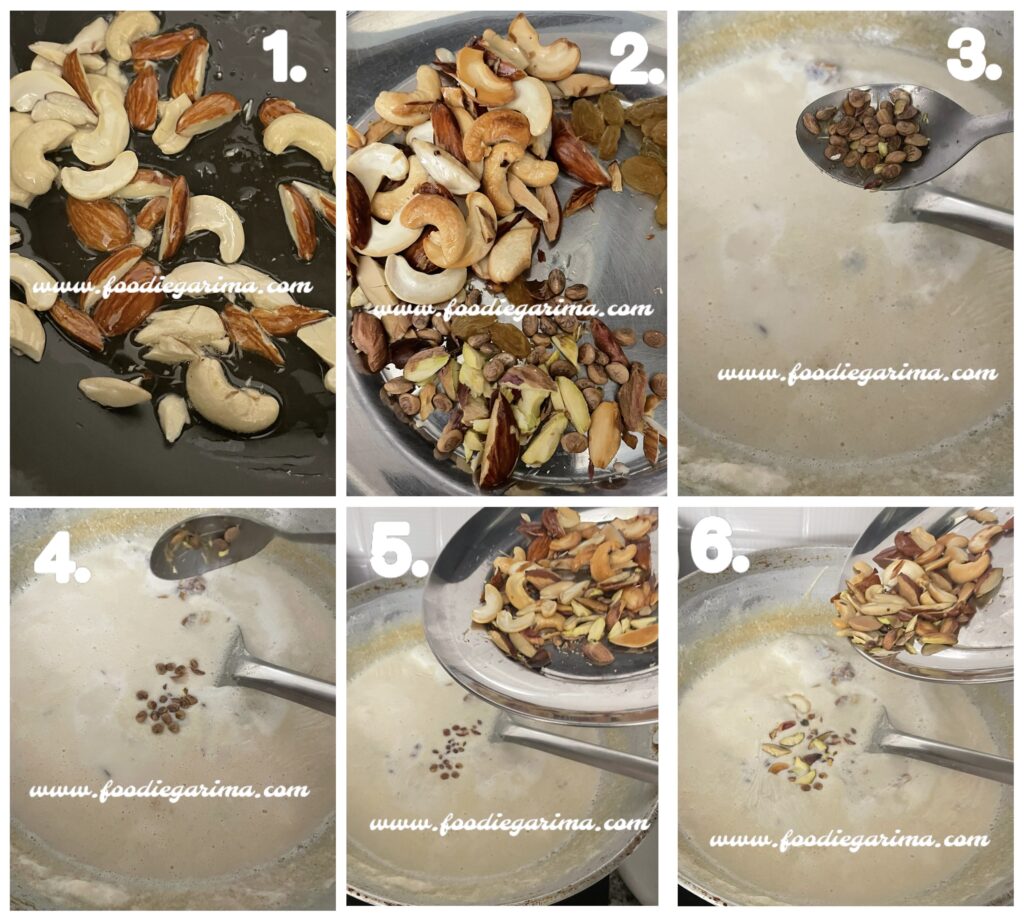
4. Roasting Vermicelli
- Heat 2 tablespoons of Ghee (Clarified Butter) in a pan.
- Gently crush the Vermicelli and roast it in Ghee on low heat.
- Roast until crushed Vermicelli turns golden brown.
- Keep stirring to ensure even roasting and avoid burning.

5. Combining Vermicelli and Milk
- Once the Milk reaches the desired consistency (reduced to half), gently add the roasted Vermicelli to the simmering Milk.
- Stir well to ensure that the Vermicelli is evenly distributed in the Milk.
- Allow the Vermicelli to cook in the Milk on low heat until the Vermicelli becomes soft and absorbs the Milk.
- Continue simmering on low heat.
- Stir occasionally to prevent sticking.
- Keep simmering until the mixture reaches a desired thick consistency.
6. Sweetening the Mixture
- Gradually add Sugar to the Milk and Vermicelli mixture.
- Stir well to ensure the Sugar dissolves completely.
- Adjust the quantity of Sugar according to your taste preference.
- Let the Sheer Khurma simmer on low heat for an additional 10 to 15 minutes, allowing the Vermicelli to cook thoroughly.
7. Final Touch
- Add Raisins to the Sheer Khurma just before turning off the heat.
- Also, sprinkle Cardamom Powder.
- Mix well, allowing the flavors to blend.
- Stir and let it sit for a few minutes.
- Sheer Khurma is best enjoyed warm.
- Serve it in bowls, garnish with additional Nuts if desired.

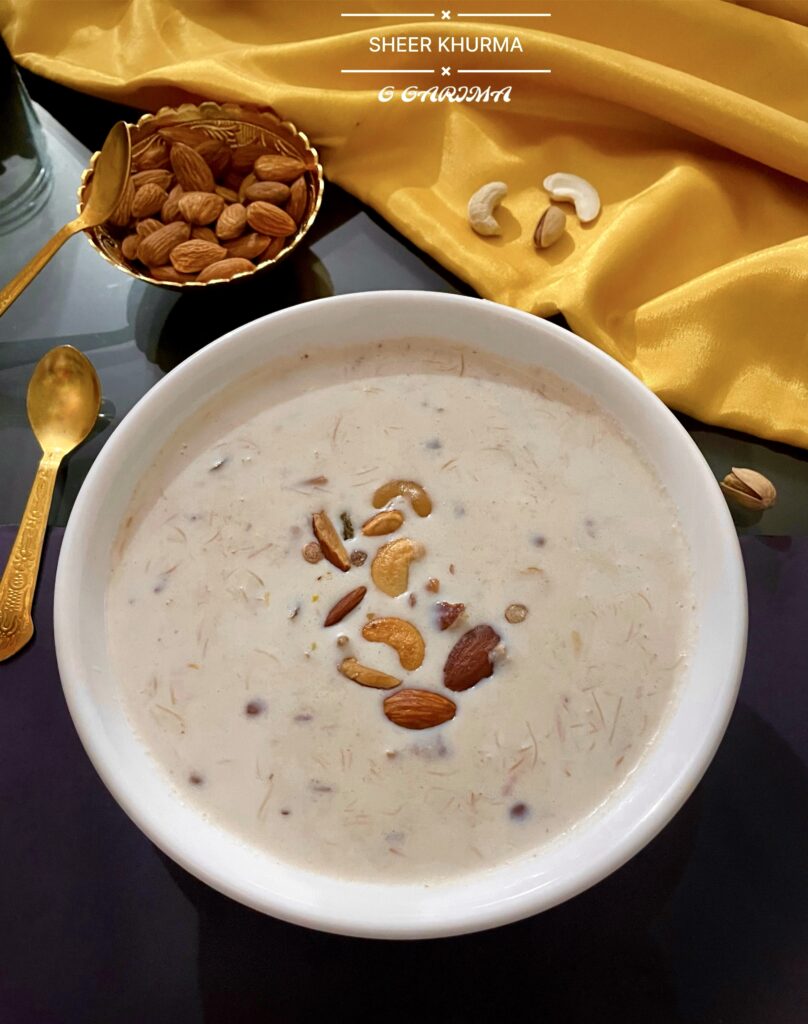

Shortcut Cooking Technique with Condensed Milk
In the fast-paced world of culinary delights, the use of Condensed Milk has become a game-changer for those seeking a quick and delicious shortcut to traditional recipes. When it comes to Sheer Khurma, a classic dessert, Condensed Milk steps in as the secret ingredient for a time-efficient yet equally delightful version.
Condensed Milk, with its rich, sweet, and thick consistency, effortlessly blends with the essence of Sheer Khurma. By incorporating sweetened Condensed Milk into the recipe, the time-consuming process of simmering Milk to achieve the desired thickness is significantly shortened. This culinary shortcut not only saves time but also ensures that the dish retains its creamy, indulgent texture.
Moreover, this shortcut doesn’t compromise on the authentic flavor of Sheer Khurma.
Health Benefits of Sheer Khurma
Beyond its deliciousness, Sheer Khurma boasts nutritional benefits. Dates provide natural sweetness and energy, Nuts offer essential fats, and Milk contributes to calcium and protein intake. However, moderate consumption is key, making it a delightful treat that can be enjoyed responsibly.
Celebration and Sheer Khurma
The charm of Sheer extends far beyond its origins. As families migrate and cultures intermingle, Sheer Khurma has found its way into diverse kitchens worldwide, adapting to local tastes and traditions.
Sheer Khurma is not just a dish, it is a celebration on a palate. Traditionally, served during festivals like Eid, this dish has become a symbol of festive joy and familial bonds.